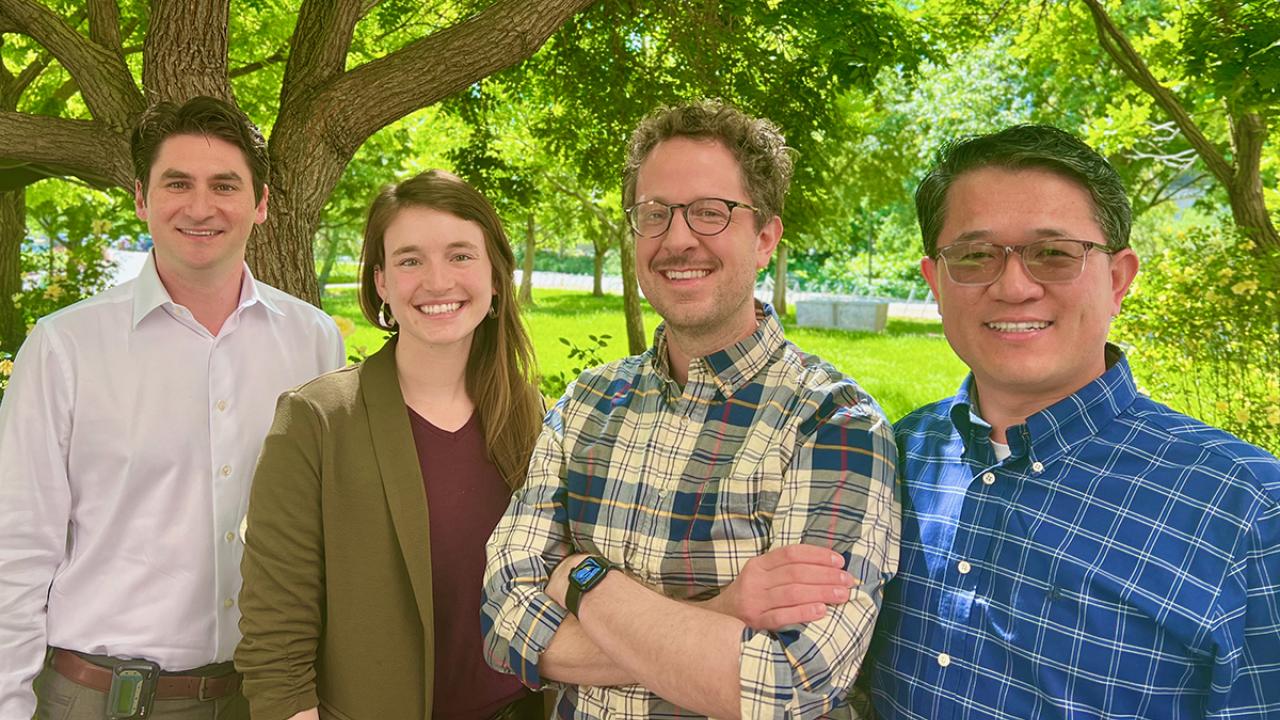
UC Davis Researchers to Harness the Cell’s Messaging System
The Team Investigates Extracellular Vesicles as Next-Generation Drug Platform by Engineering Their Uniformity, Receives $2.3M from the NIH
Researchers at the University of California, Davis, want to even out the differences in size and composition of naturally derived extracellular vesicles, or EVs, to turn them into a scalable and reliable drug platform, not unlike industrially produced medication.
Professor Aijun Wang and Assistant Professor Randy Carney of the Department of Biomedical Engineering in the College of Engineering lead the effort, with Rachel Mizenko — a Ph.D. candidate in Carney Lab and co-mentored by Wang — contributing significantly to the preparation of the proposal. The National Institute of Biomedical Imaging and Bioengineering, part of the National Institutes of Health, has provided over $2.3 million in funding.
EVs can cross biological barriers, like the blood-brain barrier, a desirable trait compared to traditional medication. They can also express tropism, or the ability to target a specific body part, which could be significant for creating next-generation drugs that address historically tough-to-treat diseases like brain cancer.
Yet, despite these known benefits, EVs are tough to work with due to their diversity in size and makeup. To explain that challenge, Carney turned to the soccer field.
"If you think of a cell as the size of a huge international soccer stadium, the EVs [they release] are anywhere from the size of the soccer ball to the size of the team bus, so very heterogeneous," Carney said. "And the molecules that come together to make those discrete EVs are the size of ants."
Historically, experts have believed they are all cell byproducts with the same function. A central premise of this project is that these variations in scale and composition are all separate and serve different purposes.
The team hopes to understand these functional differences by investigating the molecular composition across disparate naturally derived EVs. Once they have established those molecular distributions, they hope to engineer a homogenized entity composed of all the good EV parts.
"We're investigating how to homogenize — or smoosh together — these EVs to accelerate their translation to clinical applications because it's going to make them more controllable and potent in potential drug formulations," Carney said.
In this project, Wang and Carney will focus on creating a targeted drug delivery system with EVs to treat brain cancer in mice, with Professor Orin Bloch of the Department of Neurological Surgery at UC Davis Health assisting.
The team also hopes to load the EVs with synthetic drugs, increasing their inherent potency and possible use cases. Cells, which could also be used to deliver biological information, struggle when engineered.
"One may easily kill cells or lose their function by manipulating them since they're a living organism," Wang said. "EVs, on the other hand, have unique features that we can engineer without destroying them.
"With this project," he said, "we're highlighting the potential of EVs as a new system for specific drug targeting, with a goal being that our engineering approach will directly lead to EVs as a real, controllable clinical therapeutic within a few years."
